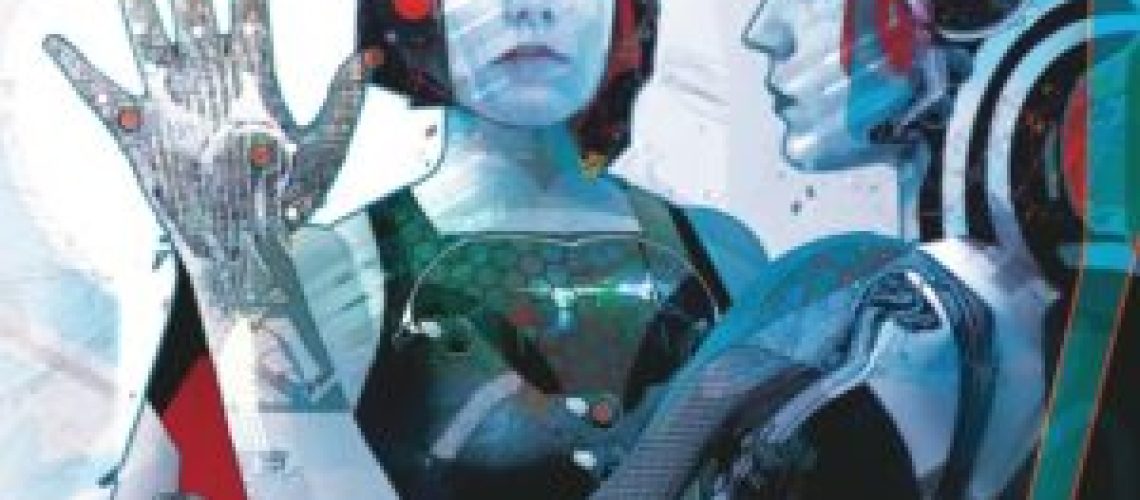Transhumanity, ecological engineering, cultural clashes and strong characterization mark Spear of Light, the second novel in The Glittering Edge sequence from from Brenda Cooper, sequel to Edge of Night (previously reviewed here at S&F). Shaun and I also talked to Brenda on episode 262 of the podcast.
If the first novel in the Glittering Edge sequence was fish-out-of-water stories, as humans learn to deal with transhumanity, and environments alien to them, the second novel is a story of full-on cultural collision. In the wake of the events of the first novel, the transhuman colony of Nexity on the planet Lym, an uncomfortable but necessary compromise created at the end of the first novel, is a source of constant tension. Under that tension between humanity and transhumanity, on Lym, is the dramatic engine that drives Spear of Light. Transhumans, humans and an ecologically fragile planet make for a potent environment for that dramatic engine to flourish and run in. And that doesn’t even mention the offworld events. While the first novel was relatively balanced between offworld and onworld events, and this novel is much more Lym focused, the events in space are crucial to the unfolding of the plot.

With the events of the prior novel making a point of view of Chrystal not possible, this novel’s points of review focus primarily on the ranger Charlie, and the Diamond Deep denizen Nona Hall. Their relationship continues to evolve and change from its beginnings in the previous novel. Unlike its predecessor, this novel, for the pair, takes place entirely on Lym. Rather than a fish out of water in the sense of Nona being unused to planetary existence and life, the author chooses to give them new roles and responsibilities, and set them to these extended and new positions of author for the two characters to get used to. The growth of both characters is a highlight of both novels.
The novel also provides new points of view. Yi, as a transhuman, gives us their side of the story. Yi was one of the High Sweet Home denizens who was forcibly converted to a transhuman existence at the same time Chrystal was in the first novel. Since time has passed, this is not quite the diving into the experience for the first time as Chrystal was, and more is a continuing pickup of her type of story. Thus, Yi still provides a relatively youthful and new look at what a transhuman existence would be like, and perhaps one that is still human enough for a reader to fully engage with. The author’s interest in transhumanism, and its perils, pitfalls, and opportunities, is never so clear as when we are in Yi’s head. Then again, a look at the cover also shows in gorgeous Stephan Martiniere’s artistry a depiction of the author’s transhumanist vision.
The most intriguing point of view, from my perspective, however, is Nayli. Nayli is a dyed-in-the-wool member of The Shining Revolution, an anti-Transhuman group that is willing to use terrorist tactics and acts to fight what they see as an existential threat to humanity. By providing a point of view within the enemy camp, as it were, the author humanizes and gives depth to the major antagonists of the novel. While the novel’s overall sympathy is definitely with the transhumans and those on their side, the inclusion of Nayli gives balance to the book. We get to understand just what The Shining Revolution is all about, even given their often deplorable methods.
The scale and revelations and illuminations of Cooper’s universe are the strongest portion of the novel. Ever since Cooper wrote Ruby’s Song, introducing us to her world, I have had questions as a reader about the genesis of that world, its origin, and ultimately, what it all means and how it hangs together. Happily, the sense of discovery and wonder that pervades the novel provides answers to the humans, transhumans, and the reader as well as to the true state of affairs. More than just an unveiling of the past, however, the novel ends on a note of hopefulness of the future, and the sense of continuity. There is a real evocation of deep time in this novel, that this story is but one of many in a branching tree, going deep into its past, and offering new opportunities, new branches, and new possibilities for the future. That sort of optimistic hopefulness, that despite the dangers and problems of the present, the future can be faced, and met, is something that I see as a hallmark of Cooper’s fiction. Here, at the end of what is really a four book sequence, that feeling is intensified.
The joys of Spear of Light are, then, best appreciated not only having read Edge of Dark first, but also Ruby’s Song and The Diamond Deep. From the first stirring of Ruby Martin’s story aboard an aging generation spacecraft, to the final scene in this novel, the sequence of four novels is poignant, subtle, nuanced, clever, and remarkable. Anyone vaguely interested in science fiction stories with a strong ecological and transhumanist focus should give this set of novels by Brenda Cooper a try.








0 Responses
This was a great a sequel! I was a little bummed we didn’t have a view point from Chrystal (would have loved to have seen what was going on in her head), but the vast array of POVs we got this time was incredible. Gave so many perspective’s to the events of what was happening – Nayli is a great example of that. Personally, my favorite was Yi and struggle he was though with being a soulbot and trying to become a true next – like the Colorimas /Jhailings.
I loved the first book (nominated it for Hugo that year). Didn’t this wasquite as good, but The Glittering Edge is still unquestionably a series that more people need to read and be talking about!